Weekly Arctic Sea Ice Age with Graph of Ice Age By Area: 1984 - 2019
This visualization shows the age of the Arctic sea ice between 1984 and 2019. Younger sea ice, or first-year ice, is shown in a dark shade of blue while the ice that is four years old or older is shown as white. A graph displayed in the upper left corner quantifies the area covered sea ice 4 or more years old in millions of square kilometers.
This video is also available on our YouTube channel.
One significant change in the Arctic region in recent years has been the rapid decline in perennial sea ice. Perennial sea ice, also known as multi-year ice, is the portion of the sea ice that survives the summer melt season. Perennial ice may have a life-span of nine years or more and represents the thickest component of the sea ice; perennial ice can grow up to four meters thick. By contrast, first year ice that grows during a single winter is generally at most two meters thick.
Above is a visualization of the weekly sea ice age between 1984 and 2019. The animation shows the seasonal variability of the ice, growing in the Arctic winter and melting in the summer. In addition, this also shows the changes from year to year, depicting the age of the sea ice in different colors. Younger sea ice, or first-year ice, is shown in a dark shade of blue while the ice that is over four years old is shown as white. A color scale identifies the age of the intermediary years.
Note that data for the sea ice age is not available along the coastlines. The region where data is not available is shown in a dark lavender color.
A graph in the upper left corner the quantifies the change over time by showing the area covered by sea ice that is 4 years old or older in millions of square kilometers. This graph also includes a memory bar - the green line that indicates the maximum value seen thus far in the animation for the given week being displayed. For example, when viewing the sea ice age for the first week in September, the memory bar will display the maximum value seen for the first week of September in all prior years from the beginning of the animation (1984).
In addition, a violet bar indicates the average area covered by sea ice greater than 4 years of age during the the 20-year time period from 1984 through 2003.
Below are matching pairs of images showing identical weeks in two different years, where one year is late in the time series and the other is early. These matched images are labeled Pair 1A and Pair 1B. The caption below the image provides additional details. Each image is available with and without the graph.
This is the same visualization as above without the graph except that this animation has been updated through the end of August, 2019.
This video is also available on our YouTube channel.

Pair 1A: This image shows the Arctic sea ice age in September 2019 when the sea ice reached its annual minimum extent (week 38). During this week, the area covered by the sea ice that was 4 years of age or older extended 53,000 square kilometers.

Pair 1B: This image shows the Arctic sea ice age in September 1984 (week 38). During this week, the area covered by the sea ice that was 4 years of age or older extended 2,687,000 square kilometers.

Pair 2A: This image shows the Arctic sea ice age in August, 2019 (week 34). During this week, the area covered by the sea ice that was 4 years of age or older extended 59,000 square kilometers.

Pair 2B: This image shows the Arctic sea ice age in August, 1987 (week 34). During this week, the area covered by the sea ice that was 4 years of age or older extended 2,639,000 square kilometers.

Pair 3A: This image shows the Arctic sea ice age in the first week (week 1) of January, 2019. During this week, the area covered by the sea ice that was 4 years of age or older extended 116,000 square kilometers.

Pair 3B: This image shows the Arctic sea ice age in the first week (week 1) of January, 1988. During this week, the area covered by the sea ice that was 4 years of age or older extended 3,121,000 square kilometers.

Pair 4A: This image shows the Arctic sea ice age in April, 2019 (week 15). During this week, the area covered by the sea ice that was 4 years of age or older extended 89,000 square kilometers.

Pair 4B: This image shows the Arctic sea ice age in April, 1986 (week 15). During this week, the area covered by the sea ice that was 4 years of age or older extended 2,791,000 square kilometers

Pair 5A: This image shows the Arctic sea ice age in October, 2018 (week 42). During this week, the area covered by the sea ice that was 4 years of age or older extended 132,000 square kilometers.

Pair 5B: This image shows the Arctic sea ice age in October, 1985 (week 42). During this week, the area covered by the sea ice that was 4 years of age or older extended 2,879,000 square kilometers.

This layer shows only the sea ice age with transparency on the Earth with no text labels, dates, graph or colorbar. All of these components are in a separate layer below.

The overlay layer with the graph, colorbar, date and text labels with transparency
Credits
Please give credit for this item to:
NASA's Scientific Visualization Studio
-
Visualizers
-
Cindy Starr
(Global Science and Technology, Inc.)
- Horace Mitchell (NASA/GSFC)
-
Cindy Starr
(Global Science and Technology, Inc.)
-
Scientist
- Walt Meier (NASA/GSFC)
-
Producers
- Jefferson Beck (USRA)
- Katie Jepson (USRA)
-
Writer
- Maria-Jose Vinas Garcia (Telophase)
-
Project support
- Leann Johnson (Global Science and Technology, Inc.)
-
Technical support
- Laurence Schuler (ADNET Systems, Inc.)
- Ian Jones (ADNET Systems, Inc.)
Datasets used
-
EASE-Grid Sea Ice Age, Version 4 [Aqua, BUOYS, DMSP 5D-2/F11, DMSP 5D-2/F13, DMSP 5D-2/F8, DMSP 5D-3/F17, MODELS, NOAA-10, NOAA-11, NOAA-14, NOAA-16, NOAA-7, NOAA-9, Nimbus-7: AMSR-E, AVHRR, DRIFTING BUOYS, SMMR, SSM/I, SSMIS]
ID: 1057This data set provides weekly estimates of sea ice age for the Arctic Ocean derived from remotely sensed sea ice motion and sea ice extent.
Credit: EASE-Grid Sea Ice Age, Version 4:
NSIDC/Mark Tschudi, Walter Meier, J Stewart, Charles Fowler, Jim MaslanikThis dataset can be found at: https://nsidc.org/data/nsidc-0611/
See all pages that use this dataset -
Quicklook Arctic Weekly EASE-Grid Sea Ice Age, Version 1 [BUOYS, DMSP 5D-3/F18: DRIFTING BUOYS, SSMIS]
ID: 1058This data set is the quicklook version of the EASE-Grid Sea Ice Age product. It is derived from the Quicklook Arctic Weekly EASE-Grid Sea Ice Motion Vectors data set.
Credit: Quicklook Arctic Weekly EASE-Grid Sea Ice Age, Version 1:
NSIDC/Mark Tschudi, Walter Meier, J StewartThis dataset can be found at: https://nsidc.org/data/nsidc-0749/
See all pages that use this dataset
Note: While we identify the data sets used on this page, we do not store any further details, nor the data sets themselves on our site.
Release date
This page was originally published on Monday, September 30, 2019.
This page was last updated on Sunday, February 2, 2025 at 12:12 AM EST.


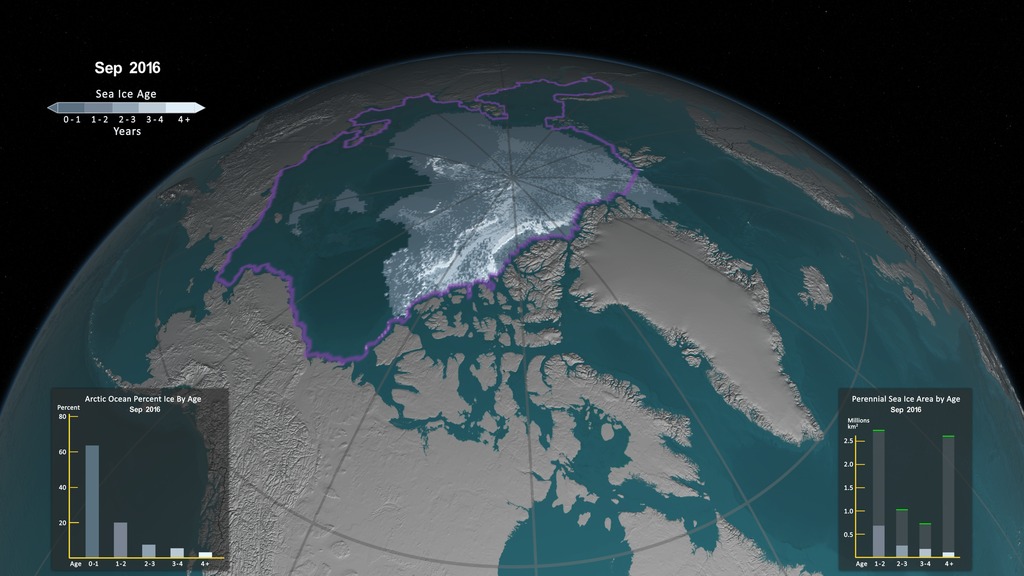
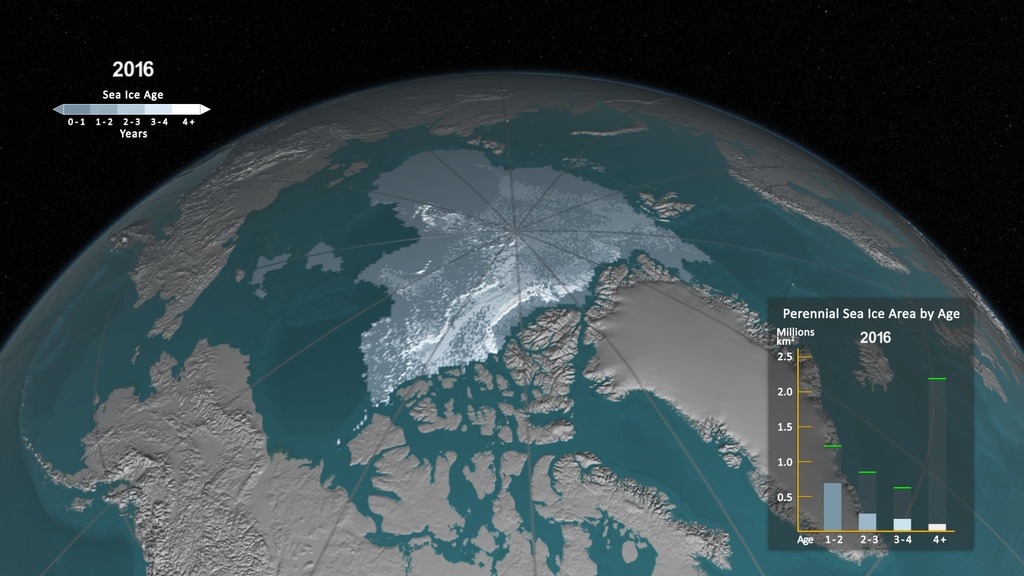
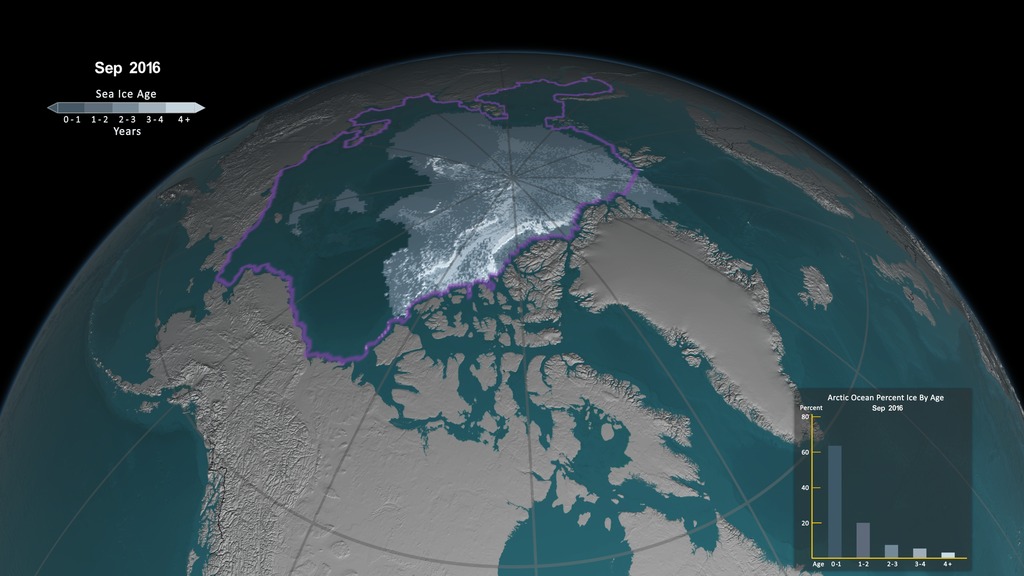
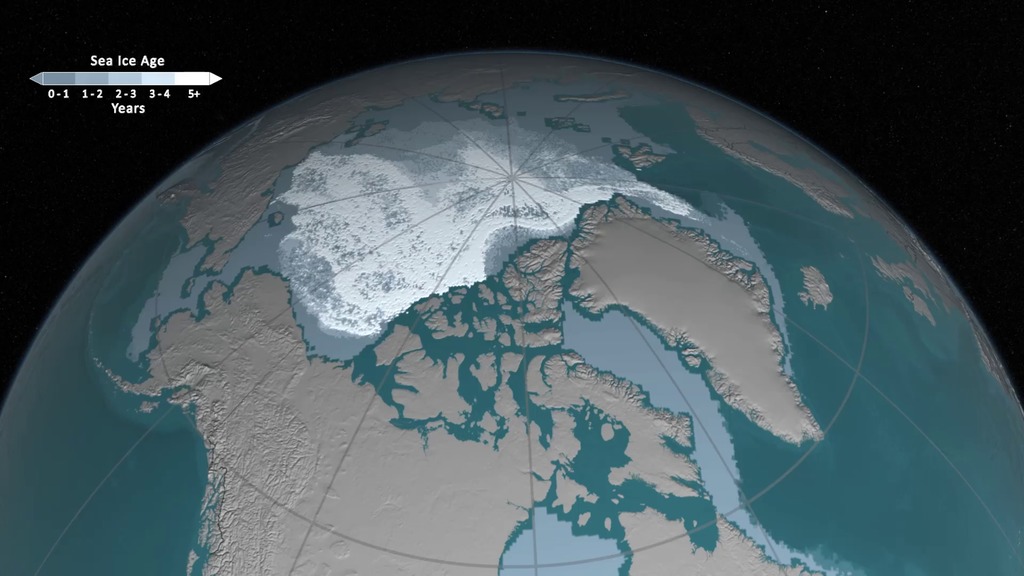
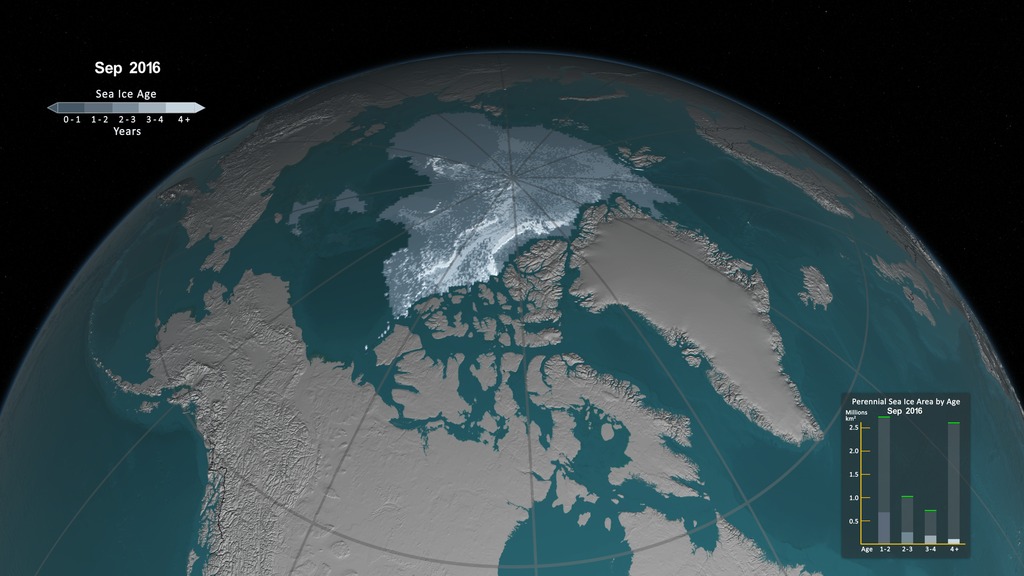
![Music: Hiraeth by Anthony Edwin Phillips [PRS], James Edward CollinsComplete transcript available.](/vis/a010000/a013300/a013309/Arctic_Min_2019_Thumbnail_LKW.png)